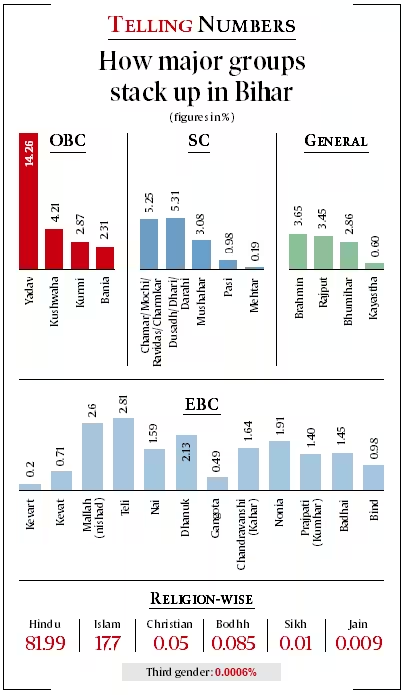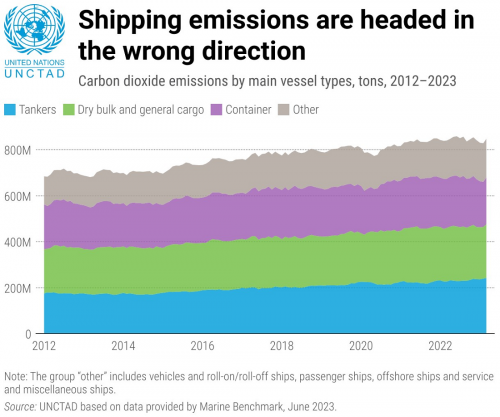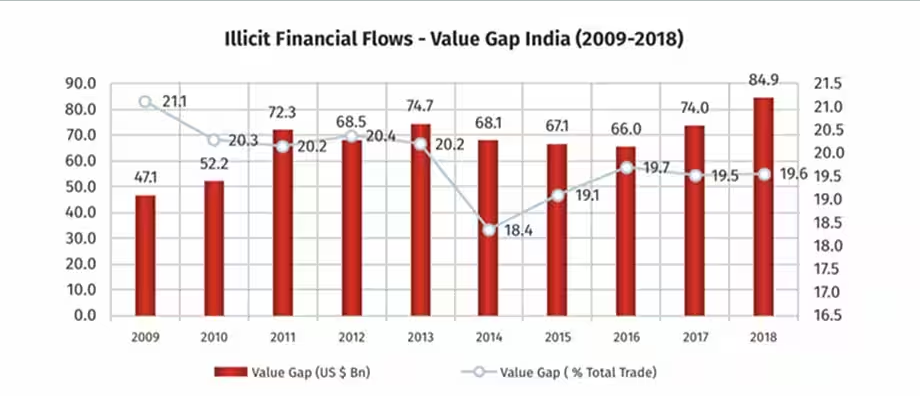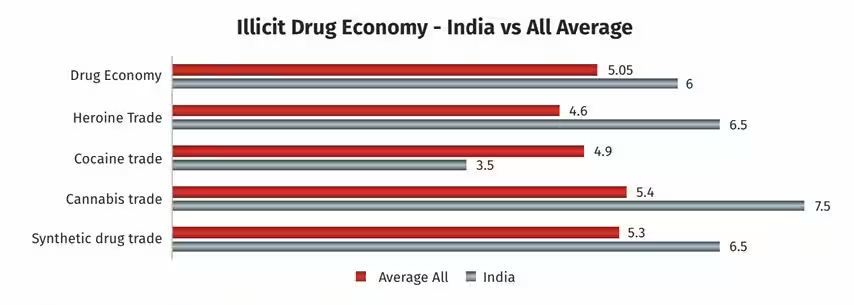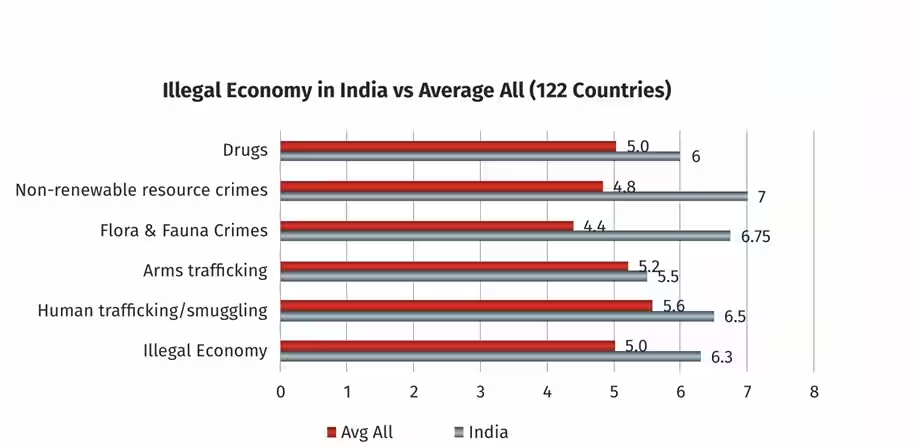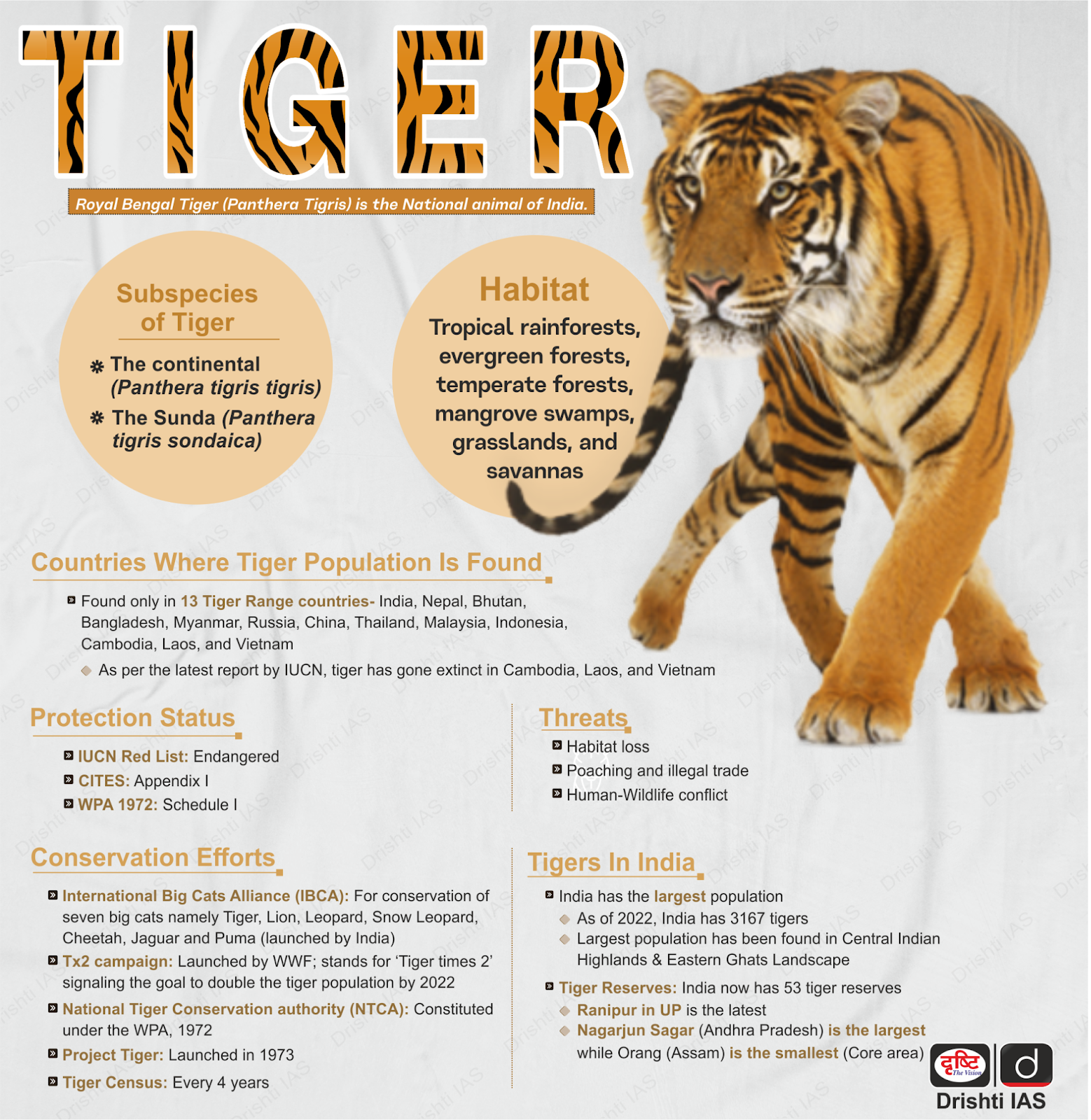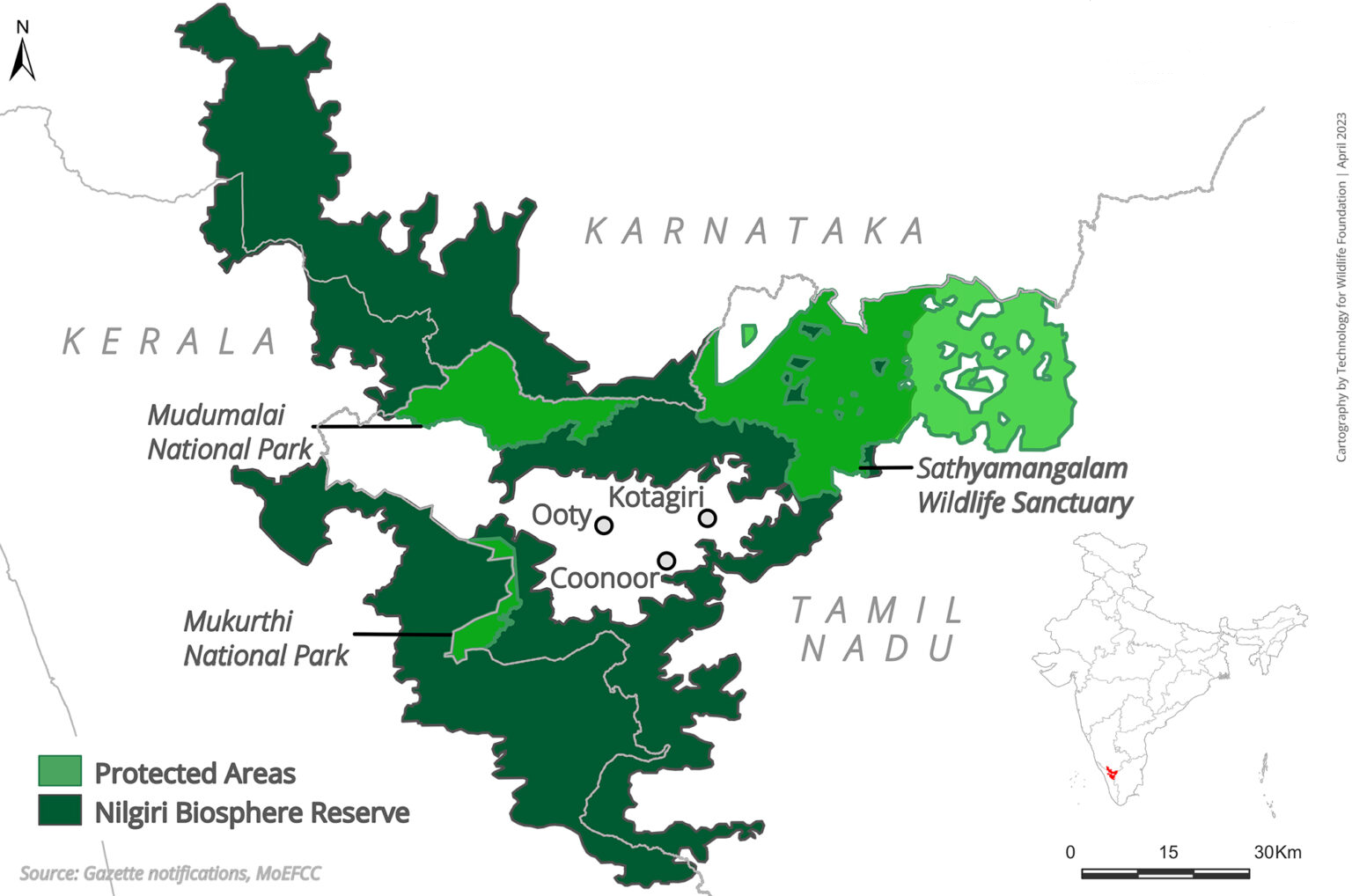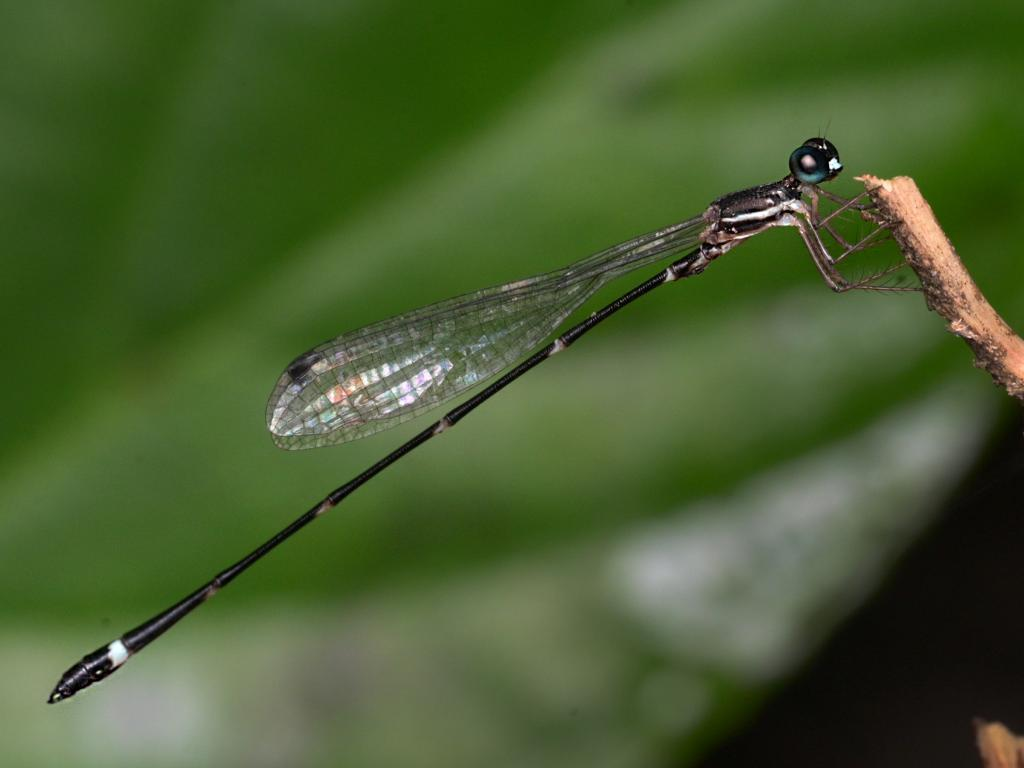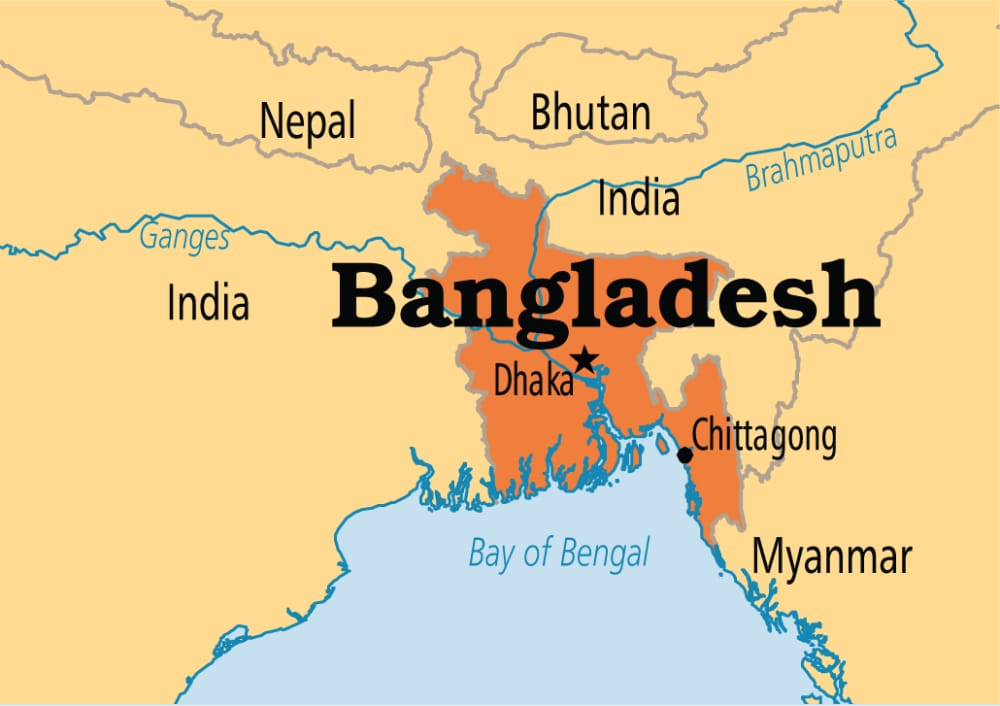Caste-Census in Bihar
For Prelims: Other Backward Classes(OBCs), Extremely Backward Classes(EBCs), Census, Socio-Economic Caste Census(SECC), Rohini Commission, Sub-Categorization
For Mains: Impact of Caste Census in improving governance and mobilzation of resources for the marginalised sections.
Why in News?
Recently, the Government of the State of Bihar released findings of the Caste Survey, 2023 which revealed that Other Backward Classes (OBCs) and Extremely Backward Classes (EBCs) together constitute 63 % of the state’s total population.
- The findings are supposed to have wider connotations in the State and National Elections and also in the identification of intended beneficiaries for various welfare schemes.
What are the Key Findings of the Bihar Caste Survey?
| Different Castes and Communities (Bihar) | Percentage Population (%) |
| Extremely Backward Classes (EBCs) | 36.01 % |
| Other Backward Classes (OBCs) | 27.12 % |
| Scheduled Castes | 19.65 % |
| Scheduled Tribes | 1.68% |
| Buddhists, Christians, Sikhs and Jains | < 1 % |
| Total Population (Bihar) | 13.07 crores |
What was the procedure adopted in the Caste Survey?
The survey was carried out in two phases, which each had its own criteria and objectives.
- First Phase:
- During this phase, the number of all households in Bihar were counted and recorded.
- Enumerators were given a set of 17 questions which were to be mandatorily answered by the respondent.
- Second Phase:
- During this phase data on people living in the households, their castes, sub-castes, and socio-economic conditions were collected.
- However, filling the Aadhaar number, caste certificate number and ration card number of the head of the family, were optional.
What is the Significance of the Bihar Caste Survey Findings?
- Increasing the OBC Quota:
- The survey results will amplify the clamour for increasing the OBC quota beyond 27%, and for a quota within quota for the EBCs.
- The Justice Rohini Commission, which has been examining the question of sub-categorisation of OBCs since 2017, submitted its report and recommendations are not yet made public.
- The survey results will amplify the clamour for increasing the OBC quota beyond 27%, and for a quota within quota for the EBCs.
- Redrawing of 50% Reservation Ceiling:
- The survey data will also reopen the debate over the 50% ceiling on reservation imposed by the Supreme Court in its landmark ruling in Indra Sawhney v Union of India (1992).
- Depending upon the population of OBCs, the demand for increase in reservation quota in proportion to that of the population can arise from different quarters of the caste groups.
- The survey data will also reopen the debate over the 50% ceiling on reservation imposed by the Supreme Court in its landmark ruling in Indra Sawhney v Union of India (1992).
- Fulfilment of Constituional Obligations:
- Caste Survey will help attain the objectives as enunciated in Directive Principles of State Policies (DPSPs) as mentioned in Part IV of the constitution.
- This will majorly help achieve the socio-economic objectives as outlined by the Constitution drafters.
- Caste Survey will help attain the objectives as enunciated in Directive Principles of State Policies (DPSPs) as mentioned in Part IV of the constitution.
- Realisation of Sarvodaya:
- Caste Census can be properly utilised to develop targeted measures so as to reduce rampant inequality across the State and promote equity and social justice In the long term.
What are the Issues With the Caste Census?
- Repercussions of a Caste Census:
- Caste has an emotive element and thus there exist the political and social repercussions of a caste census.
- There have been concerns that counting caste may help solidify or harden identities.
- Due to these repercussions, nearly a decade after the SECC, a sizable amount of its data remains unreleased or released only in parts.
- Caste is Context-specific:
- Caste has never been a proxy for class or deprivation in India; it constitutes a distinct kind of embedded discrimination that often transcends class.
- For example:
- People with Dalit last names are less likely to be called for job interviews even when their qualifications are better than that of an upper-caste candidate.
- They are also less likely to be accepted as tenants by landlords.
- Marriage to a well-educated, well-off Dalit man still sparks violent reprisals among the families of upper-caste women every day across the country.
When was the last Caste Census Conducted in India?
- Caste Census of 1931:
- The last caste census was conducted in 1931, and data was made publicly available by the British Government of the day.
- This caste census became the basis for the implementation of Mandal Commission Reports and subsequent reservation policies by the government for Other Backward Classes.
- Census of 2011:
- The Census of 2011 became the first time to collect Caste-based data after independence.
- However, the data related to caste were not made public due to fear of political favouritism and opportunism.
What is the Census?
- Origin of Census:
- The origin of the Census in India goes back to the colonial exercise of 1881.
- Census has evolved and been used by the government, policymakers, academics, and others to capture the Indian population, access resources, map social change, delimitation exercise, etc.
- First Caste Census as SECC (Socio-Economic and Caste Census):
- SECC was conducted for the first time in 1931.
- SECC is meant to canvass every Indian family, both in rural and urban India, and ask about their:
- Economic status, so as to allow Central and State authorities to come up with a range of indicators of deprivation, permutations, and combinations of which could be used by each authority to define a poor or deprived person.
- It is also meant to ask every person their specific caste name to allow the government to re-evaluate which caste groups were economically worse off and which were better off.
- Difference Between Census & SECC:
- The Census provides a portrait of the Indian population, while the SECC is a tool to identify beneficiaries of state support.
- Since the Census falls under the Census Act of 1948, all data are considered confidential, whereas according to the SECC website, “all the personal information given in the SECC is open for use by Government departments to grant and/or restrict benefits to households.”
Legal Insights
UPSC Civil Services Examination, Previous Year Question
Q1. Consider the following statements: (2009)
- Between Census 1951 and Census 2001, the density of the population of India has increased more than three times.
- Between Census 1951 and Census 2001, the annual growth rate (exponential) of the population of India has doubled.
Which of the statements given above is/are correct?
(a) 1 only
(b) 2 only
(c) Both 1 and 2
(d) Neither 1 nor 2
Ans: (d)
Nobel Prize in Physics 2023
For Prelims: Nobel Prize in Physics 2023, Electron Dynamics, Attosecond Pulses, Femtoseconds, Spectroscopy.
For Mains: Applications of Attosecond Physics
Why in News?
The 2023 Nobel Prize for Physics has been awarded to three distinguished scientists: Pierre Agostini, Ferenc Krausz, and Anne L’Huillier.
- Their groundbreaking work in the field of experimental physics has led to the development of attosecond pulses, enabling scientists to directly observe and study the rapid dynamics of electrons within matter.
What is Electron Dynamics?
- Electron dynamics refers to the study and understanding of the behavior and motion of electrons within atoms, molecules, and solid materials.
- It encompasses various aspects of electron behavior, including their movement, interactions with electromagnetic fields, and responses to external forces.
- Electrons are fundamental particles with a negative charge and they orbit the dense nucleus. For a long time, scientists had to rely on indirect methods to understand electron behavior, akin to taking a photograph of a fast-moving race car with a long exposure time resulting in a blurry image.
- The rapid motion of electrons rendered them nearly invisible to conventional measurement techniques.
- Atoms in molecules exhibit movements on the order of femtoseconds, which are incredibly short time intervals, constituting a millionth of a billionth of a second.
- Electrons, being lighter and interacting even faster, operate within the attosecond realm, a billionth of a billionth of a second (1×10−18 of second).
Note: An attosecond pulse is an incredibly brief burst of light that lasts for attoseconds.
How did Scientists Achieve Attosecond Pulse Generation?
- Background:
- In the 1980s, physicists managed to create light pulses lasting just a few femtoseconds.
- At that time, it was believed that this was the shortest achievable duration for light pulses.
- However, to 'see' electrons in action, an even shorter pulse was needed.
- In the 1980s, physicists managed to create light pulses lasting just a few femtoseconds.
- Advancements in Attosecond Pulse Generation:
- In 1987, Anne L’Huillier and her team at a French laboratory achieved a significant breakthrough.
- They passed an infrared laser beam through a noble gas, leading to the generation of overtones—waves of light with wavelengths that were integer fractions of the original beam.
- The overtones generated in the gas were in the form of ultraviolet light. Scientists observed that when multiple overtones interacted, they could either intensify each other through constructive interference or cancel each other out through destructive interference.
- By refining their setup, physicists managed to create intense attosecond pulses of light.
- In 2001, Pierre Agostini and his research group in France successfully produced a series of 250-attosecond light pulses.
- By combining this pulse train with the original beam, they conducted rapid experiments that offered unprecedented insights into electron dynamics.
- Simultaneously, Ferenc Krausz and his team in Austria developed a technique to isolate individual 650-attosecond pulses from a pulse train.
- This breakthrough allowed researchers to measure the energy of electrons released by krypton atoms with remarkable precision.
- In 1987, Anne L’Huillier and her team at a French laboratory achieved a significant breakthrough.
What are the Applications of Attosecond Physics?
- Studying Short-Lived Processes: Attosecond pulses enable scientists to capture 'images' of ultrafast atomic and molecular processes.
- This has profound implications for fields such as materials science, electronics, and catalysis, where understanding rapid changes is crucial.
- Medical Diagnostics: Attosecond pulses can be employed in medical diagnostics to detect specific molecules based on their fleeting signatures. This promises improved medical imaging and diagnostic techniques.
- Advancing Electronics: Attosecond physics may lead to the development of faster electronic devices, pushing the boundaries of computing and telecommunications technology.
- Enhanced Imaging and Spectroscopy: The ability to manipulate attosecond pulses opens up possibilities for higher-resolution imaging and spectroscopy, with applications in fields ranging from biology to astronomy.
Who are the Other Recent Nobel Laureates in the Field of Physics?
- 2022
- Alain Aspect, John F. Clauser and Anton Zeilinger “for experiments with entangled photons, establishing the violation of Bell inequalities and pioneering quantum information science”
- 2021
- “for groundbreaking contributions to our understanding of complex systems”
- Syukuro Manabe and Klaus Hasselmann “for the physical modeling of Earth’s climate, quantifying variability and reliably predicting global warming”
- Giorgio Parisi “for the discovery of the interplay of disorder and fluctuations in physical systems from atomic to planetary scales”
- “for groundbreaking contributions to our understanding of complex systems”
- 2020
- Roger Penrose “for the discovery that black hole formation is a robust prediction of the general theory of relativity”
- Reinhard Genzel and Andrea Ghez “for the discovery of a supermassive compact object at the center of our galaxy”
- 2019
- “For contributions to our understanding of the evolution of the universe and Earth’s place in the cosmos”
- James Peebles “for theoretical discoveries in physical cosmology”
- Michel Mayor and Didier Queloz “for the discovery of an exoplanet orbiting a solar-type star”
- “For contributions to our understanding of the evolution of the universe and Earth’s place in the cosmos”
- 2018
- “For groundbreaking inventions in the field of laser physics”
- Arthur Ashkin “for the optical tweezers and their application to biological systems”
- Gérard Mourou and Donna Strickland “for their method of generating high-intensity, ultra-short optical pulses”
- “For groundbreaking inventions in the field of laser physics”
- 2017
- Rainer Weiss, Barry C. Barish and Kip S. Thorne “for decisive contributions to the LIGO detector and the observation of gravitational waves”
UPSC Civil Services Examination Previous Year Question (PYQ)
Prelims
Q. Who among the following scientists shared the Nobel Prize in Physics with his son? (2008)
(a) Max Planck
(b) Albert Einstein
(c) William Henry Bragg
(d) Enrico Fermi
Ans: (c)
Q. Nobel Prize winning scientist James D. Watson is known for his work in which area? (2008)
(a) Metallurgy
(b) Meteorology
(c) Environmental protection
(d) Genetics
Ans: (d)
Mains
Q1. The Nobel Prize in Physics of 2014 was jointly awarded to Akasaki, Amano and Nakamura for the invention of Blue LEDs in the 1990s. How has this invention impacted the everyday life of human beings? (2021)
Q2. Discuss the work of ‘Bose-Einstein Statistics’ done by Prof. Satyendra Nath Bose and show how it revolutionized the field of Physics. (2018)
Review of Maritime Transport 2023: UNCTAD
For Prelims: Review of Maritime Transport 2023, United Nations Conference on Trade and Development (UNCTAD), Covid-19, Greenhouse Gas (GHG) Emissions.
For Mains: Review of Maritime Transport 2023: UNCTAD.
Why in News?
Recently, the United Nations Conference on Trade and Development (UNCTAD) has released the Review of Maritime Transport 2023, highlighting the Issue of Greenhouse Gas (GHG) Emissions from International Shipping and Challenges in Decarbonization.
What are the Key Highlights of the Review?
- Emissions from International Shipping:
- GHG emissions from international shipping were 20% higher in 2023 compared to a decade ago.
- The shipping industry contributes to over 80% of the world’s trade volume and nearly 3% of global GHG emissions.
- Growth in Shipping Volume:
- Global maritime shipping volumes experienced a 0.4% drop in 2022 due to disruptions in global supply chains caused by Covid-19.
- However, it is projected to grow by 2.4% in 2023.
- Containerized trade is expected to grow by 1.2% in 2023 and further by 3% between 2024-2028.
- Oil and gas trade volumes showed robust growth in 2022.
- Non-Availability of Alternative Fuels:
- Early in January 2023, commercial ships were on average 22.2 years old and more than half of the world’s fleet was over 15 years old.
- As the average age of the world fleet is increasing, it raises concern that alternative fuels are not yet available at scale and are more costly, and the ships that can use them are also more costly than traditional ships.
- Transitioninig to Alternative Fuels:
- It is very difficult for ship owners to renew their fleet without clarity on technology and regulatory regimes, and port terminals also face similar challenges, particularly with regard to investment decisions.
- 98.8% of the global fleet uses conventional fuels like heavy fuel oil, light fuel oil, and diesel/gas oil.
- Only 1.2% are using alternative fuels, mainly LNG, LPG, methanol, and to a lesser extent, battery/hybrid.
- However, progress is underway as 21 % of vessels currently on order are designed to run on alternative fuels, notably LNG, LPG, battery/hybrid and methanol.
- Cost Estimates and Transition Challenges:
- Decarbonizing the world's fleet by 2050 could require annual investments ranging from USD 8 billion to USD 90 billion.
- Full decarbonization could double yearly fuel costs, necessitating a just transition for the sector.
- IMO (International Maritime Organization) has set a target to achieve net-zero GHG emissions by around 2050.
- The 2023 IMO GHG Strategy aims for at least 5-10% uptake of zero or near-zero GHG fuels by 2030.
What are the UNCTAD's Recommendations for Economic Incentives?
- Renewable ammonia and methanol fuels are seen as more suitable for newer ships with dual-fuel engines.
- Sustainable marine fuels should achieve zero or near-zero carbon dioxide equivalent emissions on a life-cycle 'well-to-wake' basis.
- UNCTAD advocates for system-wide collaboration, swift regulatory intervention and stronger investments in green technologies and fleets.
- Economic incentives, such as levies or contributions related to shipping emissions, can promote the competitiveness of alternative fuels and support investments in climate-resilient infrastructure.
- There is a need to balance environmental goals with economic needs but underscores that the cost of inaction far outweighs the required investments.
- Beyond cleaner fuels, the Shipping industry needs to move faster towards digital solutions like AI and blockchain to improve efficiency as well as sustainability.
What are the Initiative of International bodies to Decarbonize International Shipping?
- Energy Efficiency Existing Ship Index (EEXI):
- IMO is revising its existing carbon intensity regulations for ships with EEXI, which limits the technical carbon intensity of the ship by limiting how much carbon dioxide the ship is designed to emit based on its size and ship type, and the Carbon Intensity Indicator (CII), which grades ships from A-E based on their operational carbon intensity, based on how much fuel the ships use each year.
- IMO’s Mid-Term Measures:
- Additionally, IMO is developing new regulations called Mid-Term Measures, which will include a technical element, most likely a Greenhouse Gas Fuel Standard (GFS), as well as an economic element, such as a carbon levy, a feebate system, or cap-and-trade.
- The IMO aims to agree on these measures by 2025 and have them enter into force in 2027.
- The Green Voyage 2050 Project:
- It is a partnership project between the Government of Norway and IMO launched in May 2019 aiming to transform the shipping industry towards a lower carbon future.
- International Convention for the Prevention of Pollution from Ships (MARPOL Convention):
- MARPOL convention is the main international convention covering prevention of pollution of the marine environment by ships from operational or accidental causes.
- The MARPOL Convention was adopted on 2nd November 1973 at IMO.
Social Audit of MGNREGA Scheme
For Prelims: Mahatma Gandhi National Rural Employment Guarantee Act, Social Audit Mechanism, MGNREGA and SDGs, Purchasing Power.
For Mains: Social Audit Mechanism under MGNREGA and Related Issues.
Why in News?
The Mahatma Gandhi National Rural Employment Guarantee Act (MGNREGA), a fundamental component of India's social welfare initiatives, has been marred by persistent concerns regarding a high incidence of corruption.
- Although the program incorporates mechanisms, such as social audit units, recent statistics reveal disappointing outcomes in terms of fund recovery and overall effectiveness.
What does Recent Statistics Suggest?
- In the ongoing financial year (2023-24), social audit units flagged misappropriation amounting to ₹27.5 crore under MGNREGA.
- After taking corrective actions, this amount reduced to ₹9.5 crore, but only a meager ₹1.31 crore (13.8% of the total) has been recovered.
- The recovery rates in previous financial years show a similar trend of inefficiency:
- In 2022-23, the recoverable amount was ₹86.2 crore, but only ₹18 crore (20.8% of the total) was recovered.
- In 2021-22, ₹171 crore was flagged, yet a mere ₹26 crore (15% of the total) was recovered.
- These consistently low recovery rates raise significant concerns about the scheme's effectiveness in combating corruption.
- The low recovery rate also jeopardizes the credibility of the entire audit process. This threatens to undermine public trust in MGNREGA's integrity and purpose.
What is MGNREGA Scheme?
- About: MGNREGA is one of the largest work guarantee programmes in the world launched in 2005 by the Ministry of Rural development.
- It provides a legal guarantee for one hundred days of employment in every financial year to adult members of any rural household willing to do public work-related unskilled manual work at the statutory minimum wage.
- Active workers: 14.32 Crore (2023-24)
- Major Features:
- The cornerstone of MGNREGA's design is its legal guarantee, ensuring that any rural adult can request work and must receive it within 15 days.
- If this commitment is not met, an "unemployment allowance" must be provided.
- It requires that priority shall be given to women in such a way that at least one-third of the beneficiaries shall be women who have registered and requested for work.
- Section 17 of the MGNREGA has mandated Social audit of all Works executed under the MGNREGA.
- The cornerstone of MGNREGA's design is its legal guarantee, ensuring that any rural adult can request work and must receive it within 15 days.
- Implementation Agency: The Ministry of Rural Development (MRD), Govt of India is monitoring the entire implementation of this scheme in association with state governments.
- Objective: This act was introduced with an aim of improving the purchasing power of the rural people, primarily semi or unskilled work to people living below poverty line in rural India.
- It attempts to bridge the gap between the rich and poor in the country.
What is Social Audit Mechanism?
- About:
- Social Audit is the examination and assessment of a programme/scheme conducted with the active involvement of people and comparing official records with actual ground realities.
- It is a powerful tool for social transformation, community participation and government accountability.
- It is different from Financial Audit. The financial audits scrutinize financial records to assess an organization's financial health, social audits concentrate on evaluating a program's effectiveness in achieving its social goals by involving stakeholders.
- Social Audit is the examination and assessment of a programme/scheme conducted with the active involvement of people and comparing official records with actual ground realities.
- Social Audit Mechanism under MGNREGA:
- Provision:
- Section 17 of the MGNREGA has mandated Social audit of all works executed under the MGNREGA.
- The Audit of Scheme Rules, 2011, also known as the Mahatma Gandhi National Rural Employment Guarantee Audit of Schemes Rules, 2011, were developed by the Ministry of Rural Development in collaboration with the Comptroller and Auditor General (CAG) of India.
- These rules outline the procedures for social audits and the duties of various entities, including the Social Audit Unit (SAU), state government, and field workers of MGNREGA, to be followed nationwide.
- Related Issues:
- Fund-Starved Units: Social audit units are grappling with insufficient funding, hindering their ability to function effectively.
- The Union government provides funds to social audit units to ensure their independence from states.
- However, issues with timely fund allocation have left units in states like Karnataka and Bihar without funds for nearly two years.
- Lack of Training: Inadequate training and resources further hinder their effectiveness in identifying malpractice.
- Personnel Shortage: Insufficient staffing makes it difficult for social audit units to carry out their duties effectively.
- Low Recovery Rate: Several states, including Gujarat, Goa, Meghalaya, Puducherry, and Ladakh, have consistently reported "zero cases" and "zero recoveries" over the last three years. This raises questions about the effectiveness of monitoring in these regions.
- States like Telangana, despite having active social audit units, struggle with low recovery rates.
- Fund-Starved Units: Social audit units are grappling with insufficient funding, hindering their ability to function effectively.
- Provision:
Way Forward
- Stakeholder Engagement: Involve all stakeholders, including beneficiaries, civil society organizations, government officials, and auditors, in the evaluation and redesign of the social audit process.
- Also, there is a need to Invest in training and capacity-building programs for auditors responsible for conducting social audits.
- Whistleblower Protection: Establish a robust mechanism for protecting whistleblowers who report irregularities or corruption in MGNREGA projects. Encourage individuals to come forward without fear of reprisal.
- Community Participation: Promote active participation of local communities in the audit process. Empower them to monitor and report on project progress and fund utilization.
- Also, there is a need to establish Grievance Redressal Committees at the village level to address issues promptly.
- Feedback Mechanism: Establish a feedback loop where audit findings are used to improve the MGNREGA program. Identify systemic issues and work towards continuous improvement.
UPSC Civil Services Examination, Previous Year Question (PYQ)
Q. Among the following who are eligible to benefit from the “Mahatma Gandhi National Rural Employment Guarantee Act”? (2011)
(a) Adult members of only the scheduled caste and scheduled tribe households
(b) Adult members of below poverty line (BPL) households
(c) Adult members of households of all backward communities
(d) Adult members of any household
Ans: (d)
Illicit Trade in India
For Prelims: Illicit Trade in India, FICCI CASCADE, Illicit Markets, Financial Flows, Organised Crime and Terrorism, Money Laundering, Red Sanders, GDP (Gross Domestic Product).
For Mains: Ilicit Trade in India and its implications on Indian Economy.
Why in News?
As per a report released by FICCI CASCADE titled ‘Hidden Streams: Linkages Between Illicit Markets, Financial Flows, Organised Crime and Terrorism’, the illegal economy in India has an overall score of 6.3 in India on a scale of 1-10, which is higher than the average score of 5 of other 122 countries indicating a substantial illegal Economy.
What is FICCI CASCADE?
- FICCI CASCADE (Committee Against Smuggling and Counterfeiting Activities Destroying Economy), is an initiative by the Federation of Indian Chambers of Commerce and Industry (FICCI).
- It was established on 18th January, 2011 in order to address the pressing issue of illicit trade in counterfeits, pass-offs, and smuggled goods in India and globally.
What is Illicit Trade?
- Illicit trade refers to the illegal exchange of goods, services, or commodities that circumvent established laws, regulations, or controls set by governments or international bodies.
- These activities occur outside the legal framework and often involve various forms of contraband, counterfeiting, piracy, smuggling, tax evasion, Money Laundering, and other illicit activities.
What are the Key Highlights of the Report?
- Overview of Illicit Trade in India:
- 3.5 tonnes of gold, 18 crore cigarette sticks, 140 metric tonnes of Red Sanders, and 90 tonnes of heroin were seized in the Financial Year of 2022-23.
- India has a lower score of 4.3 compared to the average score of 5.2 for 122 countries, suggesting a lesser involvement of organised crime actors but a significant influence of criminal networks.
- Illicit Financial Flows in India:
- Value Gap India (2009-2018):
- India faced an approximate total potential revenue loss of USD 13 billion due to misinvoiced imports and exports during 2009-2018.
- Uncollected value-added tax (VAT) amounted to a total of USD 3.4 billion, contributing to the revenue gap.
- India faced an approximate total potential revenue loss of USD 13 billion due to misinvoiced imports and exports during 2009-2018.
- Value Gap India (2009-2018):
- Terror and Crime in India:
- Dealing with terrorism and crime cost India approximately USD 1170 billion at Purchasing Power Parity (PPP) in 2021, accounting for about 6% of the country's GDP (Gross Domestic Product).
- PPP is a metric used by macroeconomic analysis that compares different countries' currencies through a "basket of goods" approach, allowing them to compare economic productivity and standards of living between countries.
- Dealing with terrorism and crime cost India approximately USD 1170 billion at Purchasing Power Parity (PPP) in 2021, accounting for about 6% of the country's GDP (Gross Domestic Product).
- Drug Economy in India:
- India’s location near major drug-producing regions, including the Golden Triangle (Myanmar, Laos, and Thailand) and the Golden Crescent (Afghanistan, Pakistan, and Iran) has been associated with activities that may involve the transportation and distribution of controlled substances.
- India has seen a rise in illicit drug trade, with 3,172 cases of drug seizures recorded during 2014-2022 compared to 1,257 cases during 2006-2013.
- Cannabis has a significant presence in India with a score of 7.5 compared to the benchmark average of 5.4. Synthetic drug trade and heroin trade also exceed benchmark averages with scores of 6.5.
- Organised Crime and Illegal Economy in India:
- Aggregate score of organized crime actors in India is low, at 4.3 compared to the average benchmark of 5.2 for 122 countries.

- The criminal network, however, has a significant influence in India with a score of 6, which is higher than the average score of 5.8 for 122 countries.
- The illegal economy in India has an overall score of 6.3, which is higher than the average score of 5 of 122 countries.
- This suggests that although there are fewer criminal actors, they are widespread and engage in a variety of unlawful activities, including drug and human trafficking and the illegal trade in wildlife products.
- This apparent contradiction may be attributable to the efficacy of criminal networks in India, which enables them to generate substantial illicit financial flows despite their small numbers.
- Aggregate score of organized crime actors in India is low, at 4.3 compared to the average benchmark of 5.2 for 122 countries.
What are the Government Initiatives to Tackle Illicit Trade in India?
- Terror Funding and Fake Currency (TFFC) Cell
- The Narcotic Drugs and Psychotropic Substances Act, (NDPS) 1985
- National Action Plan for Drug Demand Reduction
- National Fund for Control of Drug Abuse
- Prevention of Money-Laundering Act, 2002 (PMLA)
- PMLA (Amendment) Act, 2012
- The Smugglers and Foreign Exchange Manipulators (Forfeiture of Property) Act, 1976
- The Fugitive Economic Offenders Act, 2018
- The Black Money (Undisclosed Foreign Income and Assets) and Imposition of Tax Act, 2015
UPSC Civil Services Examination, Previous Year Questions (PYQs)
Prelims
Q. Consider the following statements:
- The United Nations Convention against Corruption (UNCAC) has a ‘Protocol against the Smuggling of Migrants by Land, Sea and Air’.
- The UNCAC is the ever-first legally binding global anti-corruption instrument.
- A highlight of the United Nations Convention against Transnational Organized Crime (UNTOC) is the inclusion of a specific chapter aimed at returning assets to their rightful owners from whom they had been taken illicitly.
- The United Nations Office on Drugs and Crime (UNODC) is mandated by its member States to assist in the implementation of both UNCAC and UNTOC.
Which of the statements given above are correct?
(a) 1 and 3 only
(b) 2, 3 and 4 only
(c) 2 and 4 only
(d) 1, 2, 3 and 4
Ans: (c)
Mains
Q. In one of the districts of a frontier state, narcotics menace has been rampant. This has resulted in money laundering, mushrooming of poppy farming, arms smuggling and near stalling of education. The system is on the verge of collapse. The situation has been further worsened by unconfirmed reports that local politicians as well assume senior police officers are providing surreptitious patronage to the drug mafia. At that point of time a woman police officer, known for her skills in handling such situations is appointed as Superintendent of Police to bring the situation to normalcy.
If you are the same police officer, identify the various dimensions of the crisis. Based on your understanding, suggest measures to deal with the crisis. (2019)
Tiger Deaths Raise Concerns in Nilgiris Biodiversity
For Prelims: Biosphere Reserve, Nilgiri Biosphere Reserve, Tiger
For Mains: Significance of Tiger Conservation, Related initiatives
Why in News?
The Nilgiris District in Tamil Nadu is home to a rich biodiversity and a large population of tigers. However, in the past two months, 10 tigers have died in the district due to various reasons.
- This has raised concerns among conservationists and officials about the welfare and survival of the big cats.
What are the Reasons for Tiger Deaths in Nilgiris?
- High Density of Tigers:
- The high density of tigers in the Mudumalai-Bandipur-Nagarhole complex of the Nilgiri Biosphere Reserve is pushing populations into the surrounding habitats in the Mukurthi National Park, Nilgiris and Gudalur forest divisions leading to more negative human-animal interactions.
- The rise in tiger numbers puts pressure on prey species like spotted deer, and Indian gaur.
- Scarcity of natural prey could lead tigers to target livestock, exacerbating conflicts and resulting in more deaths.
- Starvation and Infection:
- Tiger cubs, believed to be two weeks old, found dead in the Mudumalai Tiger Reserve's buffer zone.
- Postmortem suggested possible causes as starvation or umbilical infection.
- Tiger cubs, believed to be two weeks old, found dead in the Mudumalai Tiger Reserve's buffer zone.
Why are Conservationists Concerned About Tiger Population Threats?
- Poaching Threat: Recent poaching incidents in the Nilgiris district, underscore the persistent threat to tigers.
- Poachers target tigers for their valuable body parts, such as skins, bones, and organs, posing a grave risk to the population.
- Lack of Tracking and Protection: Concerns arise from the apparent challenges in tracking and protecting tiger populations effectively.
- The inability to monitor and safeguard these majestic animals contributes to conservationists' worries.
- Lack of Prey Management: Inadequate prey population management in protected areas may lead to imbalances.
- Ensuring sufficient prey for tigers is essential for their survival.
- Habitat Degradation: Degraded habitats offer limited resources, forcing tigers to roam in search of food.
- Human activities, deforestation, and encroachments contribute to habitat loss.
Nilgiri Biosphere Reserve
- About:
- The very name Nilgiris’ with literary meaning ‘blue mountains’ has originated from the appearance of blue flower clad mountains (Neelakurinji flowers) of the Nilgiris plateau within the State of Tamil Nadu.
- The reserve spans across three Indian states: Tamil Nadu, Karnataka, and Kerala.
- It was the first biosphere reserve in India established in 1986.
- It is the India’s first biosphere reserve under UNESCO’s Man and the Biosphere Programme.
- Home to several tribal groups such as the Adiyan, Aranadan , Kader , Kurichian , Kuruman , and Kurumbas.
- It portray the confluence of Afro-tropical and Indo-Malayan biotic zones of the world.
- The very name Nilgiris’ with literary meaning ‘blue mountains’ has originated from the appearance of blue flower clad mountains (Neelakurinji flowers) of the Nilgiris plateau within the State of Tamil Nadu.
- Fauna:
- Animals like Nilgiri tahr, Nilgiri langur, slender loris, blackbuck, tiger, gaur, Indian elephant and marten are found here.
- Freshwater fishes such as Nilgiri danio (Devario neilgherriensis), Nilgiri barb (Hypselobarbus dubuis) and Bowany barb (Puntius bovanicus) are endemic to this Biosphere Reserve.
- Protected Areas in NBR:
- The Mudumalai Wildlife Sanctuary, Wayanad Wildlife Sanctuary, Bandipur National Park, Nagarhole National Park, Mukurthi National Park and Silent Valley are the protected areas present within this reserve.
UPSC Civil Services Examination, Previous Year Question (PYQ)
Prelims
Q. Among the following Tiger Reserves, which one has the largest area under “Critical Tiger Habitat”? (2020)
(a) Corbett
(b) Ranthambore
(c) Nagarjunasagar-Srisailam
(d) Sundarbans
Ans: (c)
Toto Language
Why in News?
The Toto language, spoken by only 1,600 people in West Bengal, is on the brink of extinction.
- However, a trilingual dictionary (Toto-Bengali-English) called "Toto Shabda Sangraha" is set to be released in Kolkata on 7th October 2023, to help preserve the toto language.
What is the Toto Language?
- The Toto language is a Sino-Tibetan language spoken by the Toto tribal people in parts of West Bengal bordering Bhutan.
- The United Nations Educational, Scientific and Cultural Organization (UNESCO) lists it as a critically endangered language.
- The Toto language is primarily spoken orally and even though prominent community member Padma Shri-decorated Dhaniram Toto developed a script as recently as in 2015, most people either write it in Bengali script or write in Bengali language.
Toto People
- The Toto is a primitive and isolated tribal group residing only in a small enclave called Totopara in the Jalpaiguri of West Bengal, India.
- The total population of Totos is less than 2000 according to the 2001 census, all living in Totopara.
- The Totos are considered Mongoloid people.
- They are generally endogamous and marry within their own tribe.
- The Toto family is patrilocal(social system in which a married couple resides with the husband's parents) in nature and dominated by nuclear type. However, joint families are not rare. Monogamy is a common form of marriage among the Toto but polygamy is not prohibited. There is no custom of divorce among the Totos.
UPSC Civil Services Examination, Previous Year Question (PYQ)
Q. With reference to India, the terms ‘HaIbi, Ho and Kui’ pertain to (2021)
(a) dance forms of Northwest India
(b) musical instruments
(c) pre-historic cave paintings
(d) tribal languages
Ans: (d)
Exp:
- Odisha has a unique place in India due to its vast population of tribals residing in the state. 62 tribal communities live in Odisha which is 22.8% of the total population of Odisha.
- Odisha’s tribal language is divided into 3 main language families. They are Austro-Asiatic (Munda), Dravida and Indo-Aryan. Every tribe has its own language and language family. The languages include:
- Austro-Asiatic: Bhumij, Birhor, Rem (Bonda), Gatah (Didyai), Gutab (Gadaba), Sora(Saora), Gorum (Parenga), Khadia, Juang, Santali, Ho, Mundari, etc.
- Dravida: Gondi, Kui-Kondh, Kuvi-Kondh, Kisan, Koya, Olari, (Gadaba) Parja, Peng, Kudukh (Oraon) etc.
- Indo Aryan: Bathudi, Bhuyan, Kurmali, Sounti, Sadri, Kandhan, Aghria, Desia, Jharia, Halbi, Bhatri, Matia, Bhunjia, etc.
- Out of these languages only 7 have scripts. They are Santali (Olchiki), Saora( Sorang Sampeng), Ho (Warangchiti), Kui (Kui Script), Oraon (Kukhud Tod), Mundari (Bani Hisir), Bhumij (Bhumij Anl). Santali language has been included in the 8th Schedule of the Indian Constitution.
- Therefore, option (d) is the correct answer.
Project Udbhav
Why in News?
Recently, the Indian Army in partnership with the United Service Institution of India (USI), wrapped up a hybrid-panel discussion as part of Project Udbhav.
- The discussion focused on "The Evolution of Indian Military Systems, Warfare, and Strategic Thinking: Current Research and Future Directions."
What is Project Udbhav?
- Project Udbhav is an initiative set in motion by the Indian Army to rediscover the profound Indic heritage of statecraft and strategic thoughts derived from ancient Indian texts of statecraft, warcraft, diplomacy and grand strategy.
- It focuses on a broad spectrum including Indigenous Military Systems, Historical Texts, Regional Texts and Kingdoms, Thematic Studies, and intricate Kautilya Studies.
- At its core, Project Udbhav seeks to bridge the historical and the contemporary.
- The project goes beyond rediscovering historical narratives; it aims to develop an indigenous strategic vocabulary deeply rooted in India's multifaceted philosophical and cultural heritage.
- The ultimate objective is to integrate ancient wisdom into modern military pedagogy, allowing the Indian Army to draw from centuries-old principles in today's complex strategic landscape.
- In connection with Project Udbhav, the USI will conduct a Military Heritage Festival on 21st and 22nd October, 2023.
United Service Institution of India
- USI is a national security and defense services think tank based in New Delhi, India.
- It describes its aim as the "furtherance of interest and knowledge in the art, science and literature of the defense services".
- It was founded in 1870 by a soldier scholar, Colonel (later Major General) Sir Charles MacGregor.
Rapid Fire Current Affairs
Armageddon Reedtail
Recently in Kerala's Western Ghats, researchers from MIT-World Peace University have found a new damselfly species, naming it 'Armageddon Reedtail' (protosticta armageddonia).
- The species, 'Armageddon reedtail', was named to highlight the global decline of insects due to habitat loss and climate change, referencing the term "Ecological Armageddon."
- It is distinguishable by its dark brown to black body and vibrant greenish-blue eyes, with half of its eight abdominal segments marked by delicate pale blue markings.
- It thrives exclusively in primary montane streams under dense canopy cover.
- Damselflies are in the suborder Zygoptera (pair wings). They are similar to dragonflies, but are smaller and have slimmer bodies.
- Damselflies are found mainly near shallow, freshwater habitats and are graceful fliers with slender bodies and long, filmy, net-veined wings.
SAMPRITI- XI Exercise 2023
The 11th edition of the annual joint military exercise, SAMPRITI, commenced on 3rd October 2023, in Umroi, Meghalaya. This exercise, organized alternately by India and Bangladesh, highlights the strong bilateral defence cooperation between the two countries.
- SAMPRITI-XI is a 14-day exercise that aims to enhance interoperability between the two armies, share tactical drills, and promote best practices.
- The exercise will include a Command Post Exercise (CPX) and a Field Training Exercise (FTX), focusing on Sub-Conventional Operations as per Chapter VII of the United Nations Charter, it gives the UN Security Council the power to maintain peace.
- The CPX will emphasize decision-making after thorough deliberations.
- The FTX will validate grassroots-level operations through joint tactical drills for counter-terrorist operations, including hostage rescue, crowd control measures, and the use of helicopters.
- The two nations also conduct Naval Exercise Bongosagar.
Read more: India-Bangladesh Relations
World Animal Day
World Animal Day is observed on 4th October, serving as a global commemoration focused on the promotion of animal welfare and the protection of their rights.
- It serves as a powerful reminder of our responsibility to protect and care for the diverse species that share our planet.
- The theme for World Animal Day 2023 is "Big or small, we love them all," emphasizing the importance of compassion for animals of all sizes.
- Its origins trace back to the visionary Heinrich Zimmermann, who initiated the event in 1925 and saw its recognition during a 1931 Congress of the International Animal Protection Congress in Florence, Italy.
Read more: People Rights Vs Animal Welfare
Saudi Arabia Cuts Oil Premium for India
Saudi Arabia, the world's second-largest oil producer, has reduced the premium charged on its oil exports to India in response to evolving global energy dynamics.
- The Asian premium, an additional fee imposed by the Organization of the Petroleum Exporting Countries (OPEC) on Asian nations beyond the market-based selling price, has been a subject of concern for India. India has consistently advocated for the elimination of this premium and has even proposed the introduction of an 'Asian discount' instead.
- Notably, Saudi Arabia has recently reduced the premium to USD 3.5 per barrel from around USD 10 in 2022.
- This adjustment underscores the competitive dynamics in the oil market, where nations, including India and China, the world's second and third largest crude oil importers, have increased imports from Russia due to substantial discounts offered following the Ukraine conflict.
Read more: India's Oil Dependence


